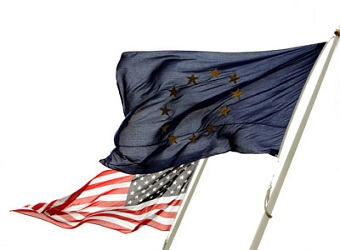The US Navy declared a worldwide pause in its operations on Monday after the latest in a series of accidents left ten sailors missing and five injured.
Chief of Naval Operations Admiral John Richardson ordered an “operational pause” to allow a “comprehensive review” of practices after the destroyer USS John McCain was hit by a merchant tanker off Singapore.
“As you know this is the second collision in three months and the last of a series of incidents in the Pacific theater,” Richardson said.
“This trend demands more forceful action. As such I have directed an operational pause be taken in all of our fleets around the world.”
US Defense Secretary James Mattis, on a visit to Jordan, said Richardson’s “broader enquiry will look at all related accidents, incidents at sea, that sort of thing. He is going to look at all factors, not just the immediate one.” There was no official word on how long the disruption to the world’s most powerful navy, active in all of the world’s oceans, might last. But some US media suggested the pause would last for a day.
There was no official word on how long the disruption to the world’s most powerful navy, active in all of the world’s oceans, might last. But some US media suggested the pause would last for a day.
Ten US sailors were still missing after the John McCain collided with a tanker Monday, tearing a large hole in its hull in the second accident involving an American warship in two months.
The badly damaged destroyer limped into port in the city-state of Singapore in the afternoon under escort after the dramatic pre-dawn accident, which sent water flooding into the vessel.
A major search involving ships and aircraft from three countries was launched for the missing sailors after the McCain hit the Alnic MC in the busy shipping lanes of the Singapore Strait, near the Strait of Malacca.
Analysts said the accident, so soon after June’s collision off Japan involving a US warship, raised questions about whether the US Navy was overstretched in Asia as it seeks to combat Chinese assertiveness in the South China Sea and North Korea’s nuclear ambitions.
The US Navy said there was “significant damage to the hull” of the warship in the latest collision, which led to flooding of crew sleeping areas, machinery and communications rooms.
“Damage control efforts by the crew halted further flooding,” they said in a statement after the John S. McCain arrived at Changi Naval Base in the city-state.
A helicopter took four of the injured to a Singapore hospital with injuries that were not life-threatening while the fifth did not need further medical attention, the navy said.
The 505-foot (154-meter) vessel could still sail under its own power after the collision at 5:24 am (2124 GMT Sunday) with the Liberian-flagged tanker, which was slightly bigger at 600 feet. Two other vessels escorted it into port, AFP journalists saw.
The warship had been heading for a routine stop in Singapore after carrying out a “freedom of navigation operation” in the disputed South China Sea earlier in August around a reef in the Spratly Islands, sparking a furious response from Beijing.
The vessel is named after US Senator John McCain’s father and grandfather, who were both admirals in the US navy.
McCain himself, who as a naval pilot was shot down during the Vietnam War and held prisoner, welcomed the review.
“I agree with Admiral Richardson that more forceful action is urgently needed to identify and correct the causes of the recent ship collisions,” he said.
“I expect full transparency and accountability from the Navy leaders as they conduct the associated investigations and reviews.”
President Donald Trump tweeted: “Thoughts & prayers are w/ our @USNavy sailors aboard the #USSJohnMcCain where search & rescue efforts are underway.”
Ridzwan Rahmat, a naval expert at Janes by IHS Markit, said initial indications suggested the US warship may not have been obeying rules designed to separate maritime traffic passing through the Singapore Strait.
With the accident coming soon after the freedom of navigation operation, he told AFP that it raised questions “whether there is crew fatigue setting in, whether or not the tempo of operations by the US Navy in this region is getting too fast.”
“Are they doing too much within this region with North Korea, and Japan and then now in the South China Sea?”
Singapore, Malaysia and US ships and aircraft were all involved in the hunt for the missing sailors.
The tanker involved in the collision, which was used for transporting oil and chemicals and weighed over 30,000 gross tonnes, sustained some damage but no crew were injured, and Singapore said there was no oil pollution.
In June, seven American sailors died when the destroyer USS Fitzgerald collided with a Philippine-flagged cargo ship in a busy channel not far from Yokosuka, a gateway to container ports in Tokyo and nearby Yokohama.
The dead sailors, aged 19 to 37, were found by divers in flooded sleeping berths a day after the collision tore a huge gash in the side of the Fitzgerald.
A senior admiral announced last week that the commander of the destroyer and several other officers had been relieved of their duties aboard their ship over the incident.
Both the USS John S. McCain and USS Fitzgerald are part of the US Seventh Fleet based in Yokosuka.
Source: AFP



